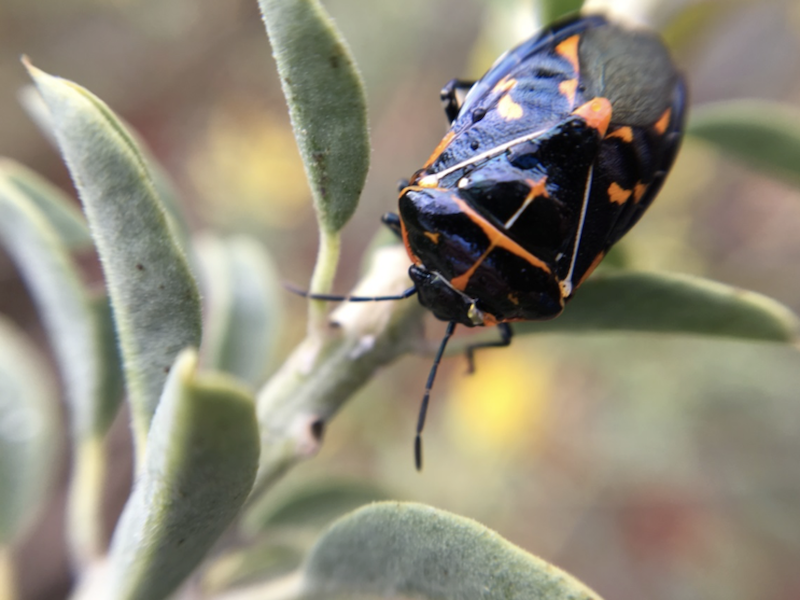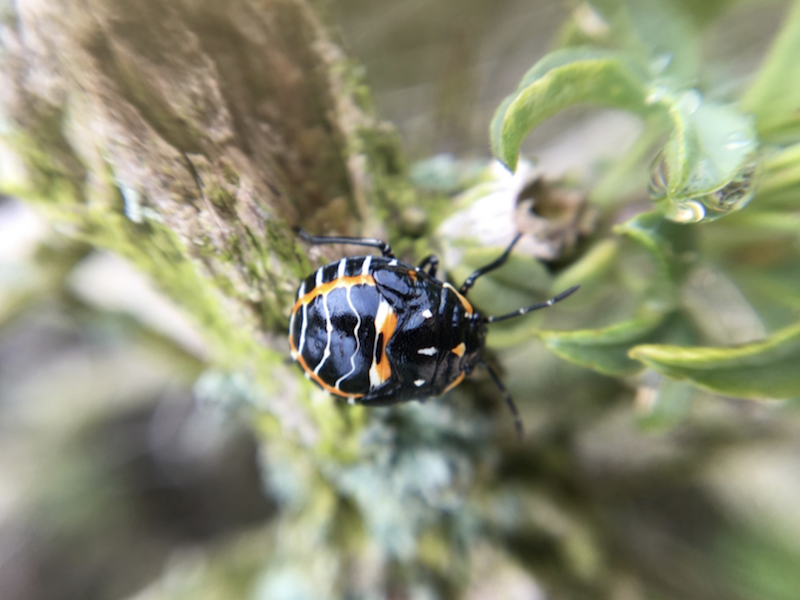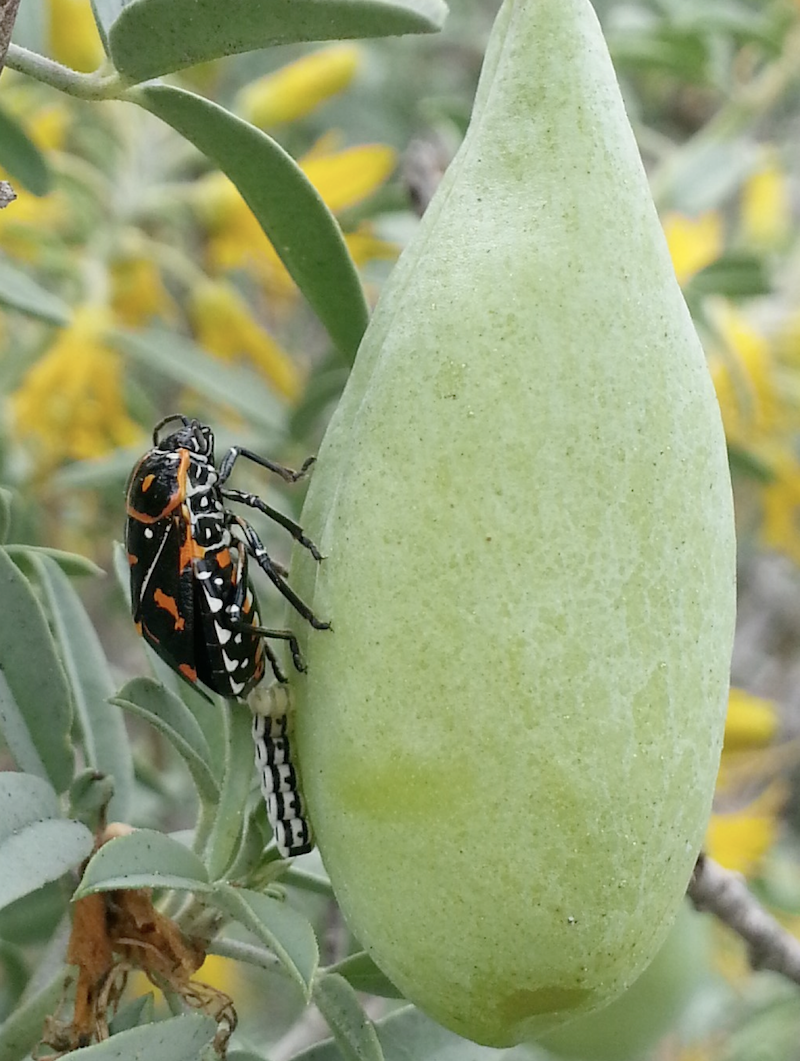
As you walk among the California Sage Scrub plant communities, you may happen upon the showy bright yellow flower clusters of the Bladderpod plant (Peritoma arborea). This native shrub blooms from November to June and the seed pods appear after pollination resembling small oval inflated balloons. But upon closer inspection, one will see the inhabitants of this pungent shrub, the Harlequin Bug (Murgantia histrionica). These little black bugs resemble small beetles, but are in the Order Hemitera, or the True Bugs. They are black with touches of bright red, orange, yellow, and white. The nymphs undergo approximately 5 molts and their color combinations evolve with each molt. The adults can live between 70 to 80 days and have a distinct X that appears on the insect’s back as the front pair of wings overlap.
The Harlequin Bug can spend its whole life on a single Bladderpod plant. When mature, the female will lay clutches of 12 eggs that look similar to tiny kegs ringed by a pair of black stripes. A female can mate multiple times and produce over 100 eggs in her life-span.

These bugs are known as agricultural pests and destructive to cabbage and related crops. This is because these bugs extract liquid from the plant for nourishment, thereby leaving blotches at feeding sites, stunted growth, wilting, and even death of young plants if feeding pressure increases. The feeding also aids the Harlequin Bug in another way. The bug extracts chemicals from the host plant that it uses as a defense mechanism. These chemicals make it taste bad to some birds and other predators, hence it’s bright warning coloration.
So the next time you pass a Bladderpod on the trail. Take a moment and look closely for this amazing little bug. The flowers won’t be the only brightly colored thing to catch you eye, the Harlequin Bug will be there with a flash of bright red, orange, and yellow too!

